History of Architecture, Urbanism, and Art, Drury University Test 2
1/93
Earn XP
Description and Tags
Name | Mastery | Learn | Test | Matching | Spaced |
|---|
No study sessions yet.
94 Terms
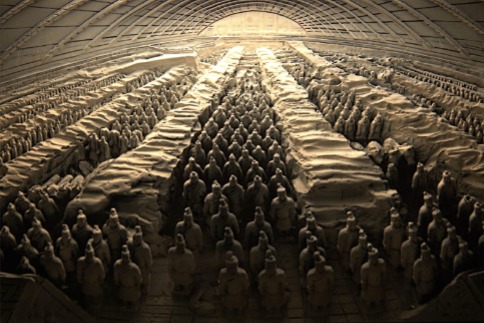
Tomb of Qin Shi Huangdi
Xi’an, China, 3rd Century BCE, a tomb that has 3 pits full life-sized figures that “guard” the emperor. Shows scale and material (strong terracotta)
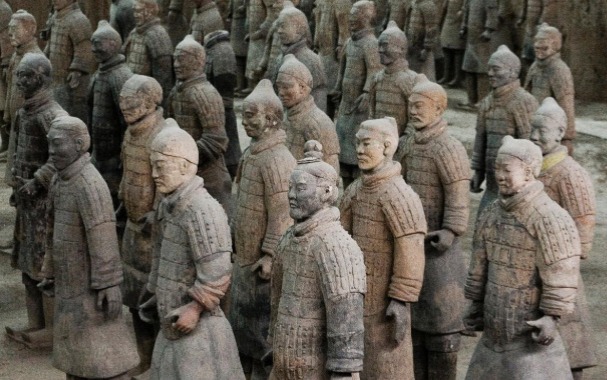
Buddhism
Originated in 6th century BCE (foundations) from Siddhartha Gauthami. Sidd came from an elite family but leaves home to find out how to not do harm and line in harmony.
Four noble truths
Concludes all existence is suffering, decides the cause of all suffering is desire, suffering can end by suppressing desires, and when desire is overcome then there is no more suffering (rebirth).
Ashoka
Spreads Buddhism in 3rd c BCE, they are a leader that has power and became infatuated with the idea.
Ashoka/Buddhism’s 4 architectural concepts
centering, quadrature, ascension and descension, and nesting
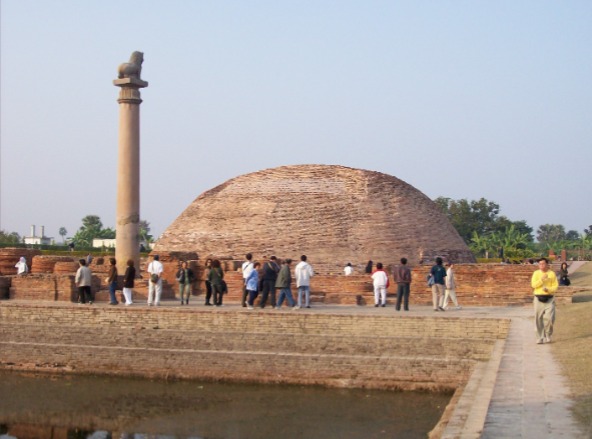
Ashoka Pillar
Sanchi, India, 3rd cen. BCE, more things added past 3rd cen. He made these pillars to show his support of Buddhism. Establishes religious sites along trade routes.
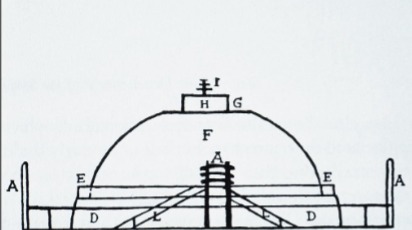
Great Stupa
Sanchi, India, 3rd cen. BCE - 1st cen. CE, typology, founded by Ashoka. Oriented with cardinal directions to give the person clarity. Egg shaped with pathway around for circumambulation.
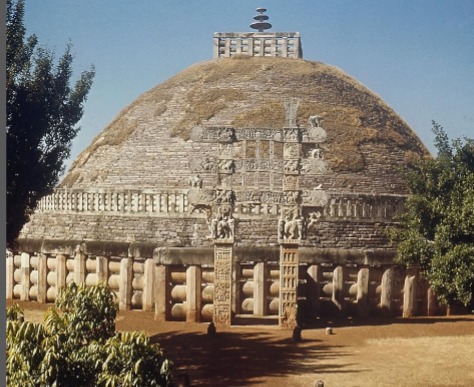
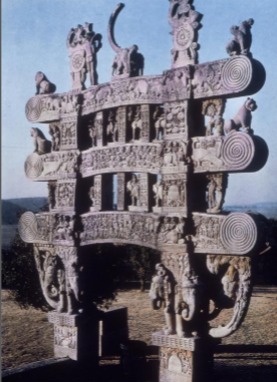
Torana
Decorated entrance gate to a Buddhist shrine,
Vedika
D (in pic) Fence enclosure
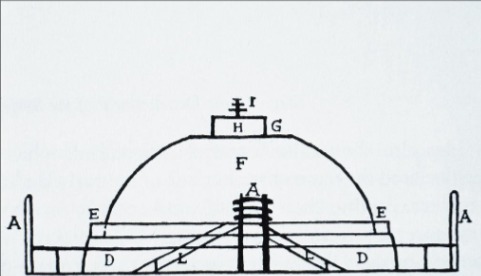
Anda
F (in pic) dome
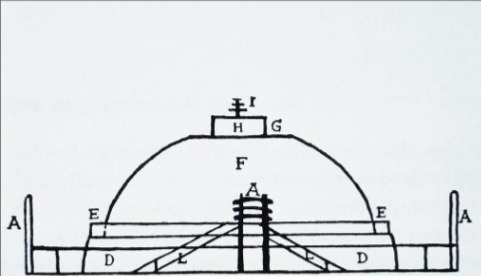
Yasti and Chatra
I (in pic) axis and umbrella
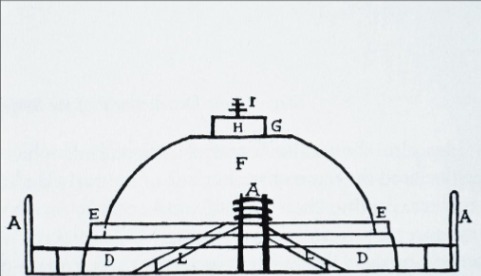
Church
The principal Christian religious building, used in public worship, with a central apse for auditory functions, side aisles for processions, and an altar in an apse.
Coffer
A square or polygonal decorative panel embossed into a ceiling or an arch.
Spolia
A fragment from another time or culture incorporated into a facade.
Apse
A vaulted, semicircular, or semipoiygonal space usually found at the sanctuary end of a Christian church.
Baptistery
A central-plan structure, usually octagonal, for Christian baptism rites.
Ambulatory
A processional passageway around a shrine or flanking the apse of a Christian church.
Narthex
The transverse vestibule of an early Christian church.
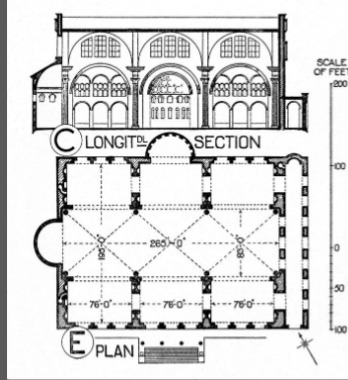
Basilic of Maxentius and Constantine
Rome, Italy, 4th Century CE, Claimed by Con and lost by Max. Follows Basilica Typology. Con used arches in the build to show he was like other past emperors.
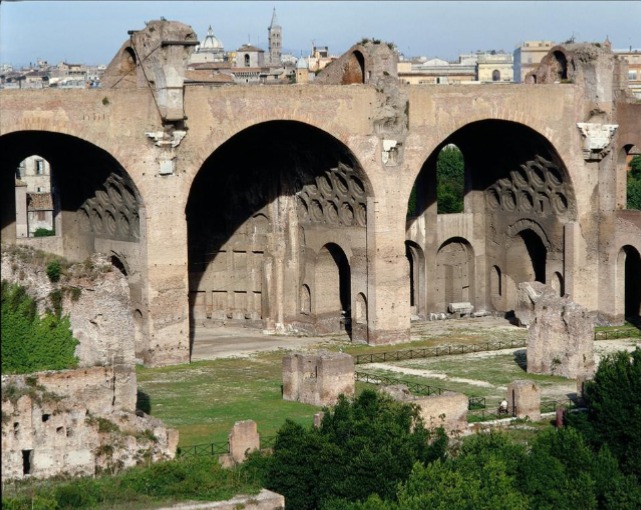
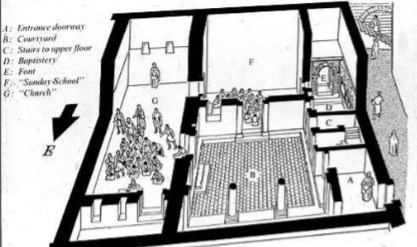
Church House
Like a domus with interior privacy that Christians would gather in for sermon (precedent).
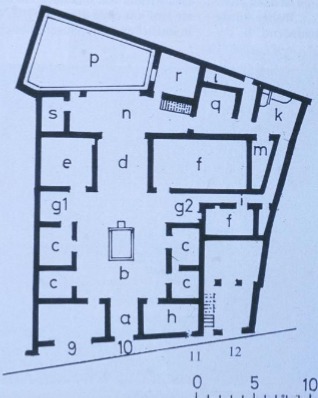
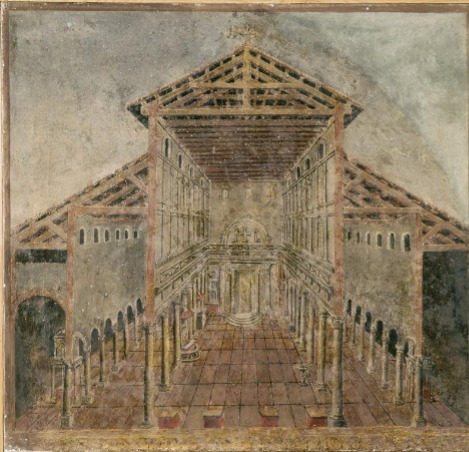
Old Saint Peter’s Basilica
Rome, Italy, 4th century CE, Patron: Constitine. Built on top of where Saint Peter was buried.
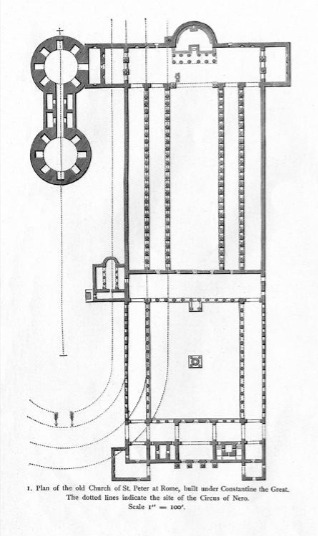
Early Christian Basilica
Basilica established just inside or right outside the walls. Usually on a place where a devote Christian was martyred or buried. Followed plan of, entry way, atrium, narthex, nave, exedra w/ alter (apse), aisle around, and transepts.

Santa Sabina
Rome, Italy, 5th century CE, follows same typology as early Christian churches. Floor is decorative with people buried in it. Plain exterior but elaborate interior.
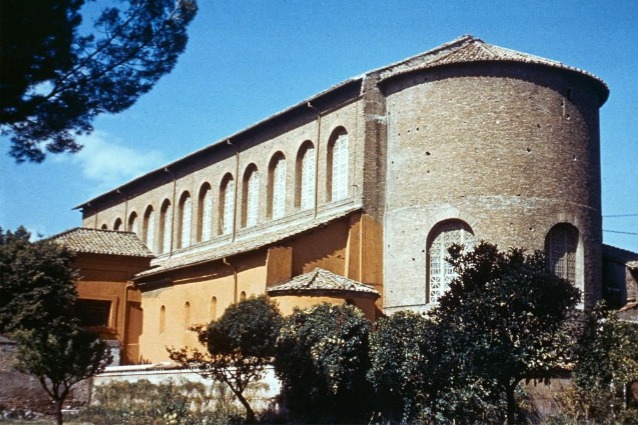
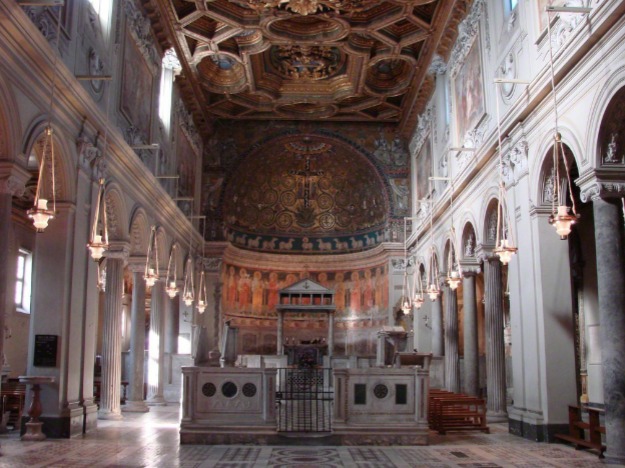
San Clemente
Rome, Italy, 1st - 17th century CE, built in layers over the years. Lowest level are remains of earliest Christian worship space. Top layer still adheres to basilica plan.
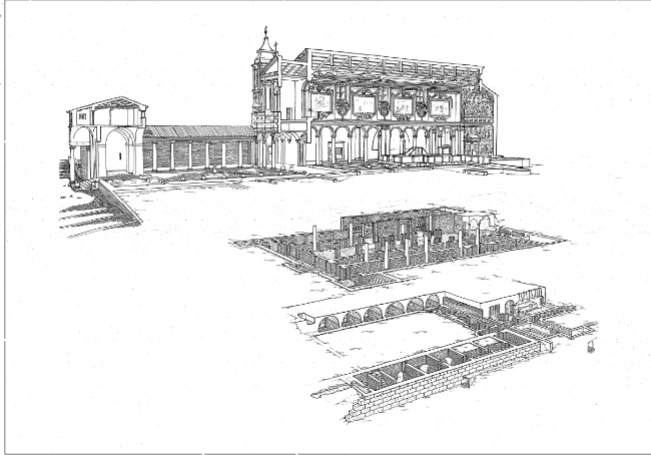
Arcade
Colonnade with arches
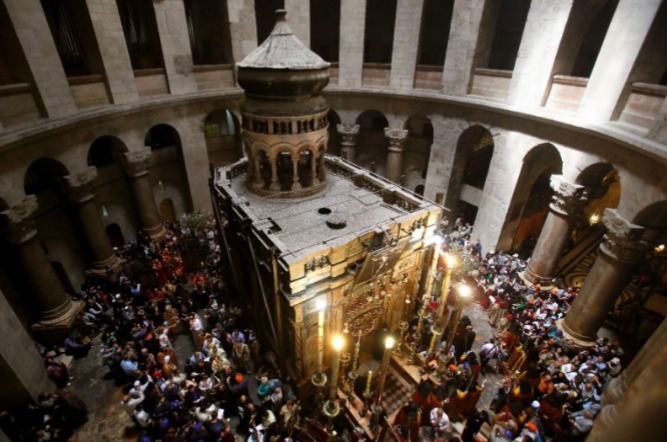
Church of the Holy Sepulcher
Jerusalem, Israel/Palestine, 4th century CE, Constantine’s mother goes to find the cross and the cave that the put Jesus in. Built on top of the cave Jesus was left in to die.
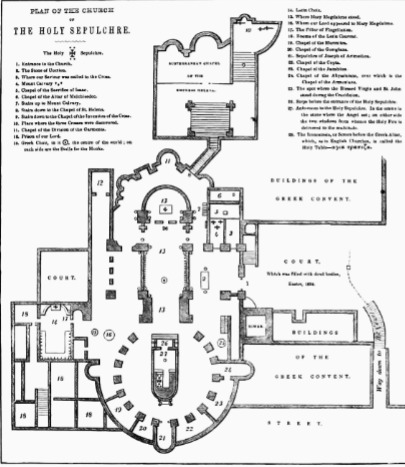
Centralized plan
Church plan that is circular
Latin Cross Plan
Church plan that is shaped like a cross with transepts.
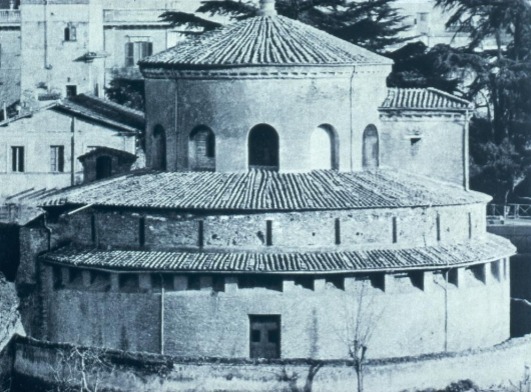
Santa Costanza
Rome, Italy, 4th century CE, Dedicated to the daughter of Constine. Draws on precedents but used Centralized plan, with alter in the middle and Ambulatory. Smaller than nor, with oval shaped narthex.
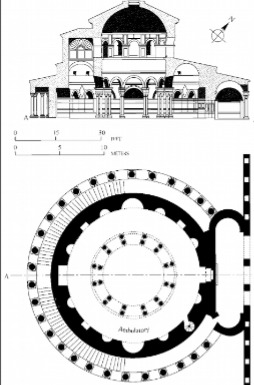
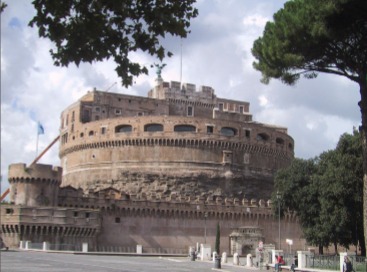
Castel Sant’Angelo (Hadrian’s Mausoleum)
Rome, Italy, 2nd Century CE, Tomb of Emperor Hadrian buried above ground (imperial tomb) and located across the river from Costanza. Used a centralized plan.
Mosque
The Islamic prayer hall.
Aniconic religion
No representation of iconic beings so no animals or people. Uses colorful tiles, calligraphy, floral and decorative patterns.
Caravansary
An Islamic stopping place for caravans also called a “khan”.
Mihrab
A niche in the qibla wall of a Muslim religious building indicating the direction toward Mecca.
Sahn
The open courtyard of an Islamic building. Place of gathering, socializing and ablution (place of washing body)
Islam
Muslims, prophet: Mohamed (570-632 CE)
Five Pillars
The creed, Prayer, Fasting, Giving of Alms, and Pilgrimage (hajj)
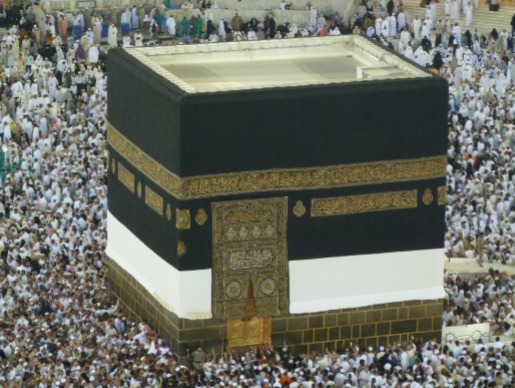
Ka’ba
Mecca, Saudi Arabia, 7th century CE? Only certain people allowed inside. No representation to show no distraction from God, except cloth covering. Tawaf takes place here.
Tawaf
Circumambulation 7 times around.
Hypostyle
Islamic typology supported by columns, with large Sahn.
Four Iwan
Islamic typology vaulted space alongside the Sahn. People gather for lessons, head of state appears here, ex. Isfahan, Iran.
Central plan
Islamic typology: following Hagia Sofia in Istanbul it focused under a massive dome.
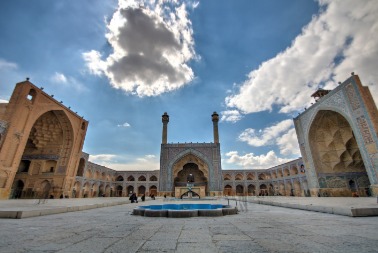
Jameh Mosque
Isfahan, Iran, 1070-1075 CE, example of Islamic typologies such as Hypostyle and Four Iwan
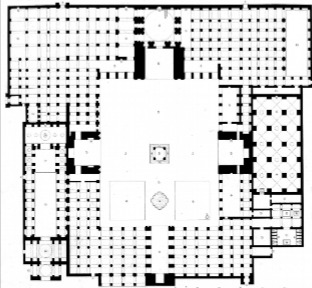
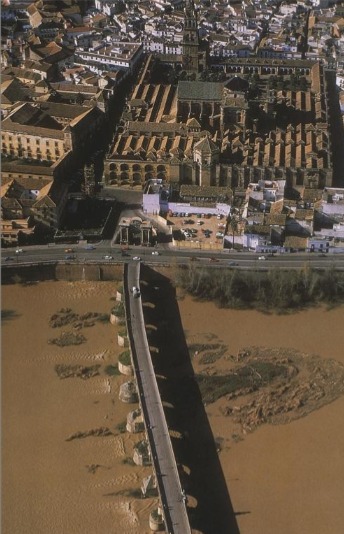
Great Mosque/Cathedral of Santa Maria
Cordoba, Spain, Begun 8th century CE, a mosque typology with a Sahn, Minaret, Qibla, Mihrab, Minbar, and sometimes a Qubba (dome).
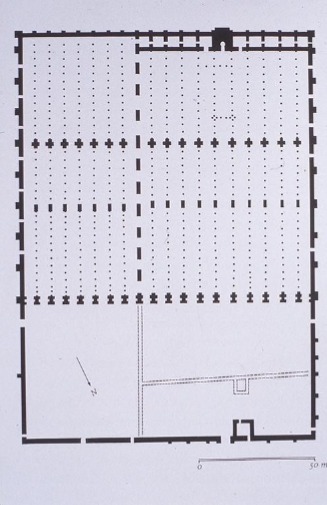
Minaret
Tower for call to prayer. Man would go up into it and call the people to prayer. Another mosque would be built right outside the Minarets range of sound.
Qibla
Direction of Mecca
Minbar
Pulpit or platform for the Imam (prayer leader), located to the right of the mihrab when facing qibla.
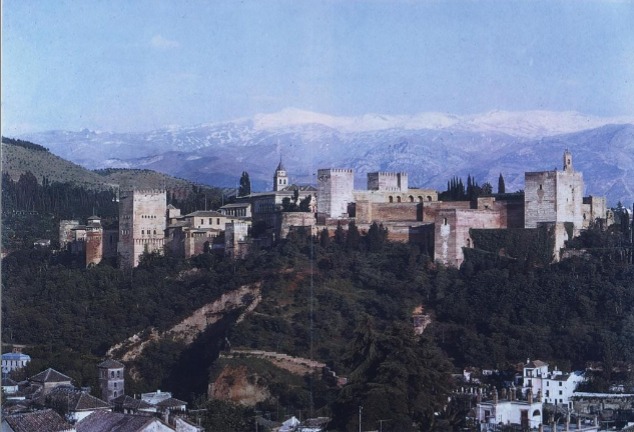
Alhambra
Granada, Spain, begun 9th century CE, renovated mid 13th century, palace where head of state would live with family and administrators. Like a Citadel (Mycenae) on top of a hill, high windows, battered walls, crenellations, and walls become narrower near entrance (like Mycenae). “Tower of Justice”
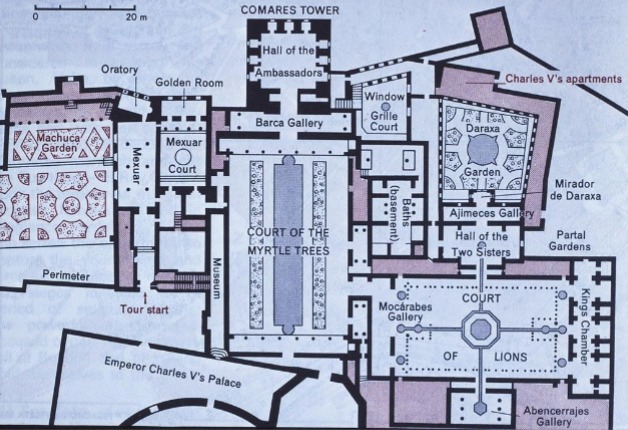
Crenellations
A pattern of repeated depressed openings (crenels) in a fortification wall used on Alhambra.
Battered wall
A wall that slopes inward as it rises used on Alhambra.
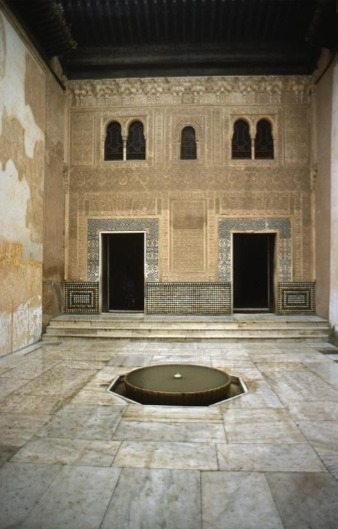
Coarto Dorado
Inside Alhambra, Granada, Spain, 9th century CE. Place of receiving and place of refreshment before meetings. Closed courtyard with walls for shade and a fountain in the middle. Powerful person can see you from the top.
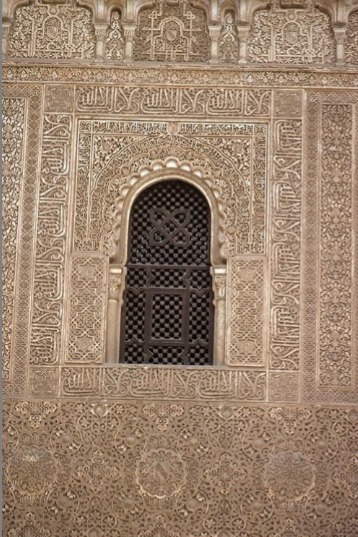
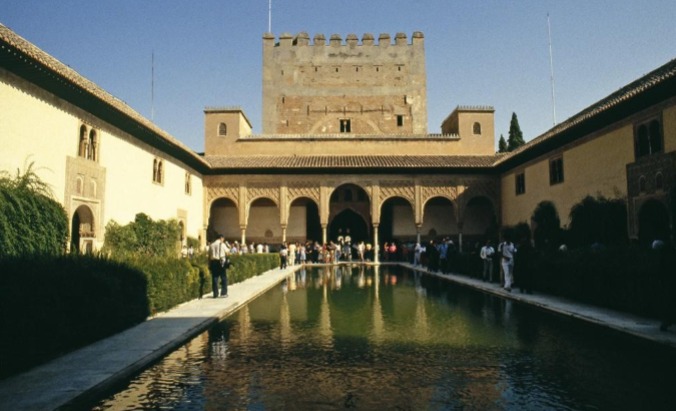
Court of the Myrtles
Inside Alhambra, Granada, Spain, 9th century CE. Has a loggia and circulation around the water which enforced the power of the people who lived there.
loggia
A roofed porch or gallery with an open arcade or colonnade. Used in Court of Myrtles.
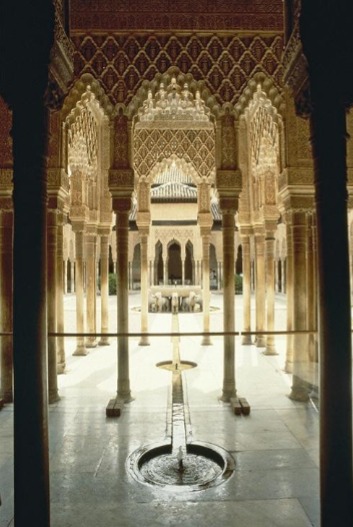
Court of the lions
Inside Alhambra, Granada, Spain, 9th century. Water channels divide the area in four to recall the four rivers of paradise.
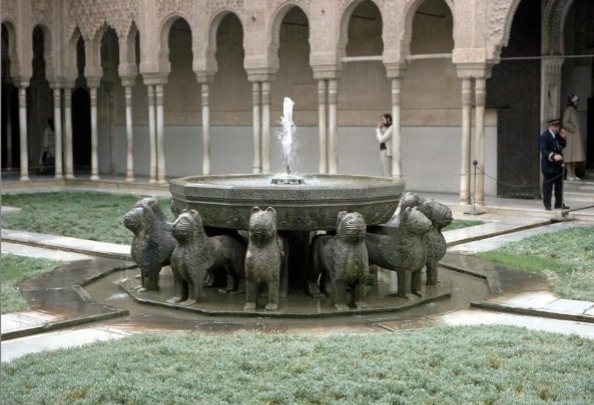
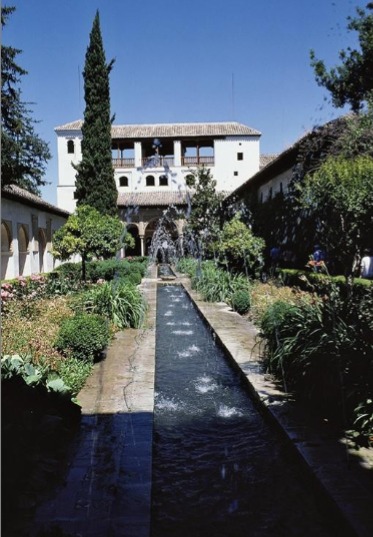
Generalife Summer Palace
Granada, Spain, begun early 13th century CE. Most always had a garden to reference the garden of Paradice. Vacation home for the head of state and family. Located next to the Palace and high up enough to catch the breeze.

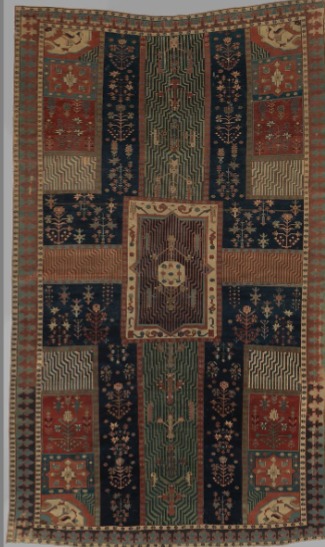
Prayer Rug
Jaipur, India, 17th century CE. Very colorful w/ many different patterns. Supposed to represent the Paradice Garden: Charbagh by having 4 quadrants, water, channels, enclosed boarders, and plants.

Byzantine Empire
6th century CE Christian empire
Characteristics of Empire
Large territory, single authority, and multiple cultural traditions and geographical situations.
Justinian I
Reigned over the Byzantine Empire from 526 to 565.
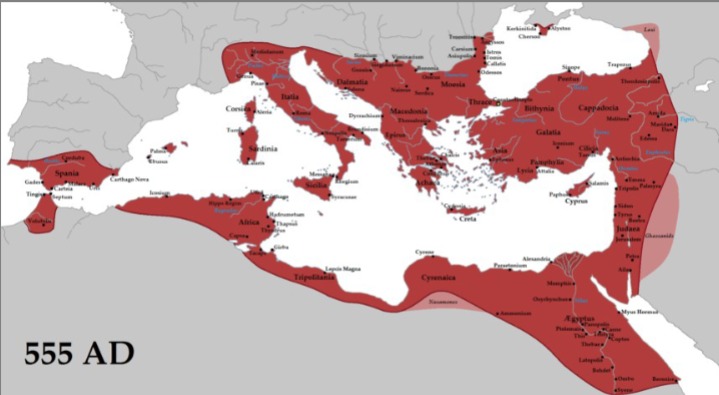
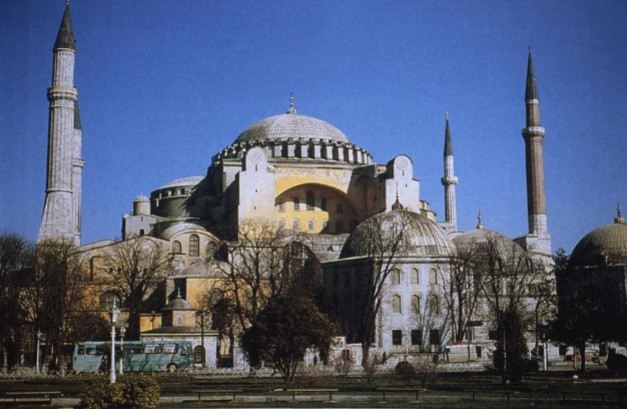
Anthemius of Tralles and Isidore of Miletus, Hagia Sofia
Istanbul, Turkey, 6th century CE. Used a combination of the Latin cross and Centralized plan (precedents). Had atrium, narthex, nave, apse, and longitudinal plan. Used domes, half domes, and vertical axis. Materials such as marble, mosaic, and light.
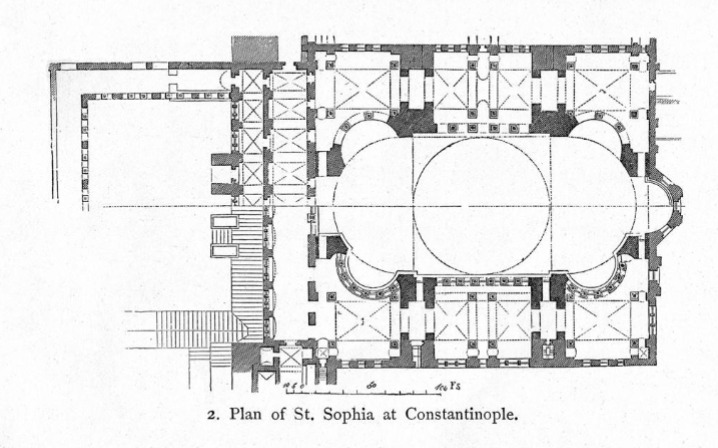
Mosaic
Surface decoration formed by small cubes of glass or stone {tesserae) set in mortar or plaster.
Pendentives
A curving triangular surface or spandrel that makes the transition from the corners of a square or polygonal room to a circular dome or its drum.
Hagia Sofia Columns
Artisans had a different take on the classical ionic capitals and used new techniques such as undercutting.
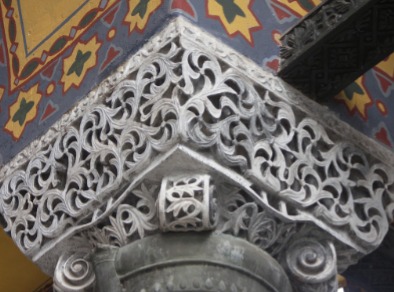
Bookmatching
Marble sheets installed next to each other to create a mirrored or book effect. Used in Higia Sofia.
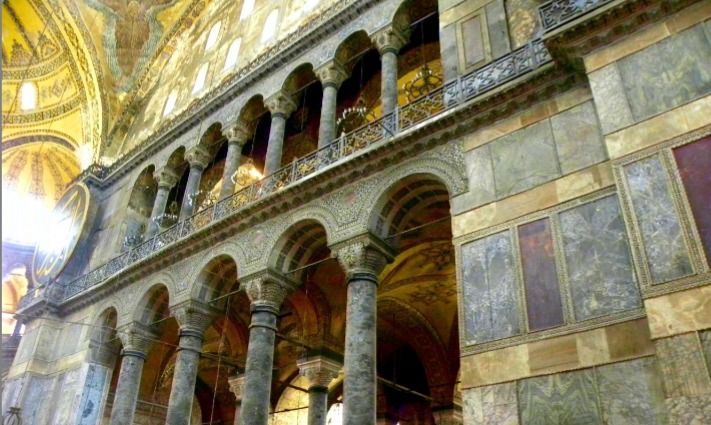
Gallery
Second story over the aisle where some people observed the service bellow. Used by women mostly and others. Example Hagia Sofia
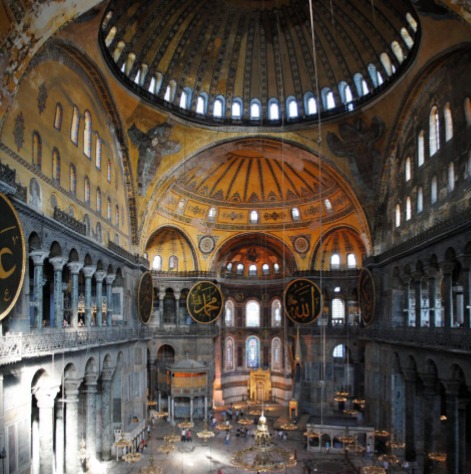
Cathedral
A church that is the home church of a bishop (west) or Patriarch (east)
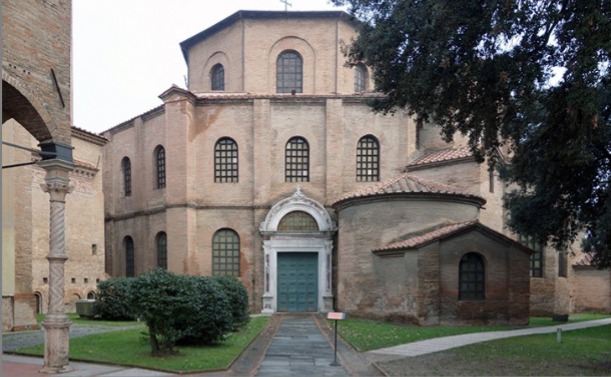
San Vitale
Ravenna, Italy, 6th century CE. Used typology set by Hagia Sofia. Had atrium and narthex, oriented toward the east, similar to centralized plan. Similar to Santa Costanza 4th c. has ambulatory but has alter in apse instead of center. Same idea as dichotomy (both) like Sofia but different. Off axis narthex
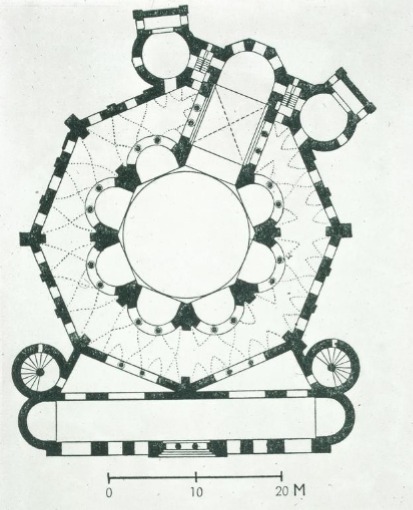
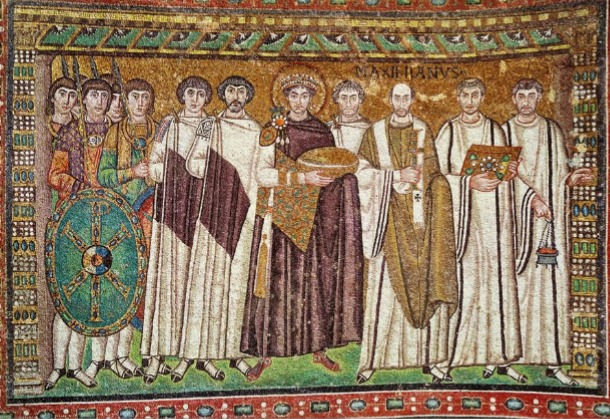
Mosaic of Emperor Justinian
San Vitale, Ravenna, Italy, 6th century CE. Left side mosaic shows Justinian as most important b/c he’s in the middle and wearing purple. Other men are clergy (people of the church) and the army present. Justinian holding bread for body of Christ. He is secular but participating in religious ceremonies.
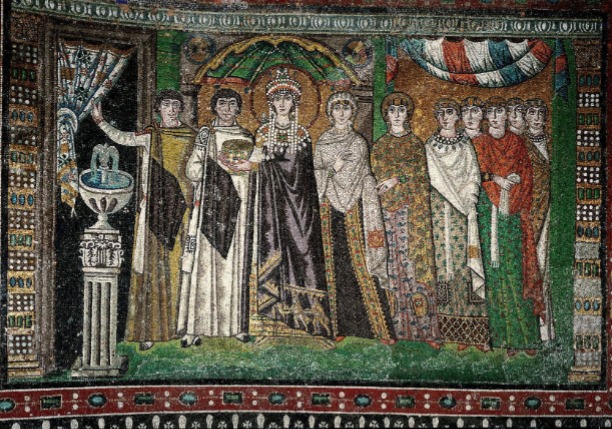
Mosaic of Empress Theodora
San Vitale, Ravenna, Italy, 6th century CE. Holding a cup of wine for the blood of Christ. Woman usually don’t participate in this ceremony. She is surrounded by many ladies in waiting/attendents with 2 guards. A female role model.
Iconography
8th and 9th century CE Byzantine Empire use of imagery. Usually scenes of Jesus, apostles or virgin Mary. Reminded people of stories since most were illiterate.
Veneration
giving respect to things that happened before and what the thing represents.
Christ Pantokrator
Image of Jesus usually displayed in the main part of churches.
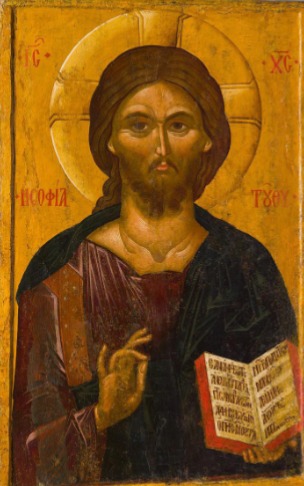
Icon Writer
The artist that makes icons they use no creativity they just replicate. They would fast, confess, and or pray before painting.
Annunciation
Icon of the virgin Mary meditating and being interrupted by the angle Gabriel telling her that she will be the mother of Jesus.
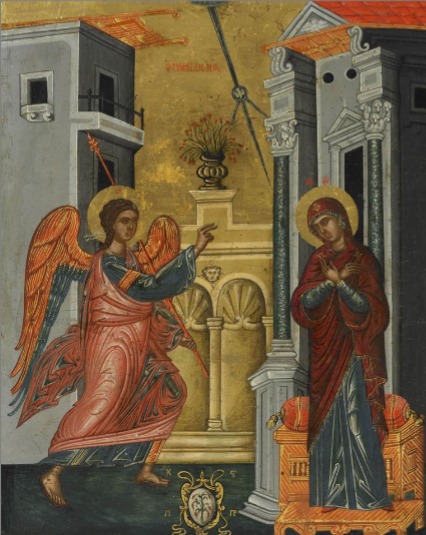
Procession of the relic
Gentile Bellini, 1496
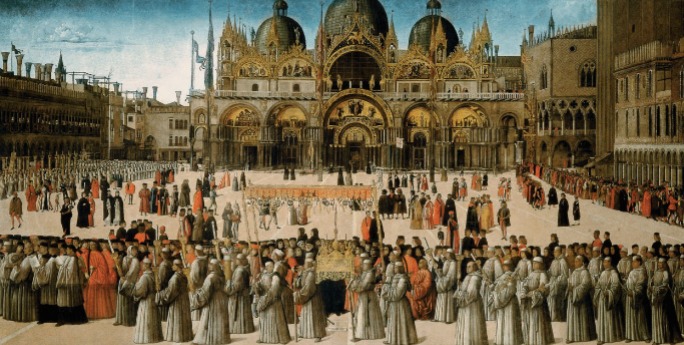
San Marco Piazza
A square opening where the main city hall and massive church for Saint Marcos. Square has changed over time.
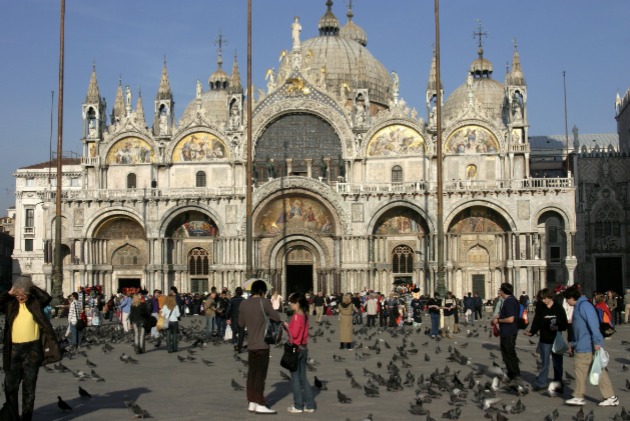
Basilica of San Marco
Venice, Italy, begun 928 CE. Saint Marco was an author of the New Testament in the Bible as well as one of the 12 apostles. Not a cathedral but understood to be the chapel of the head of state. Building a civic and religious monument. Doesn’t have a plain exterior. Strong longitudinal plan with domes/Quincunx plan.
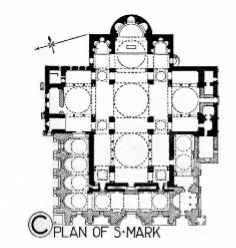
Quincunx Plan
Five dome plan 3 in the nave and 2 in the transepts. Example San Marco.
San Marco Mosaic
The body of Saint Mark, Basilica of San Marco, Venice, Italy, begun 928. Only mosaic to survive depicting people bringing back the body of Saint Mark.
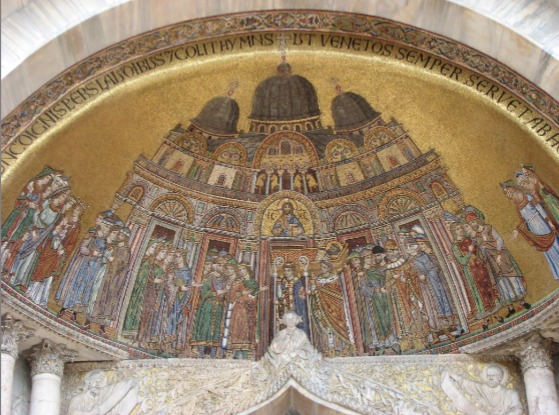
Carolingian Empire
Charlemagne had the idea to reconstruct an empire. Came from Germany to Italy and started to piece together an empire. Had the Pope crown him emperor. 8th to 9th century CE.
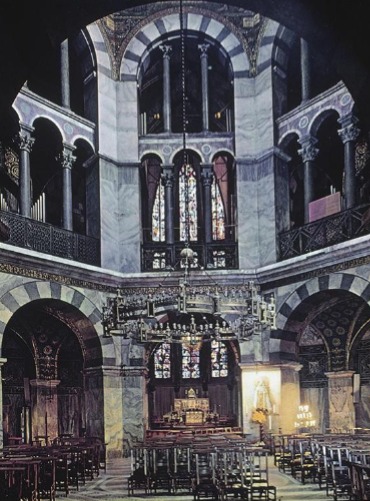
Palatine Chapel
Aachen, Germany, 8th-9th century CE. At the palace of the emperor (Charlemagne). Had vestibule, ambulatory, centralized space, apse, and gallery above ambulatory. Connected to Basilica by elevated walkway so the emperor entered on the upper level. Terice above the doorway to welcome people with arches to emphasize power.
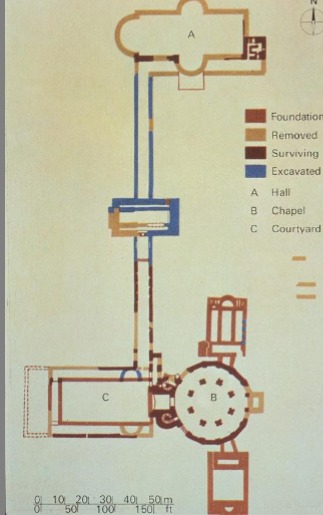
Westwork
The narthex, chapels, and twin towers set at the west entrance of Carolingian churches or a churches facade structure that has multiple spatial components.
Monastery
Where a community of people who dedicate themselves to religion and live away from society lives. Take solemn vows: Poverty, Chastity, and Obedience.
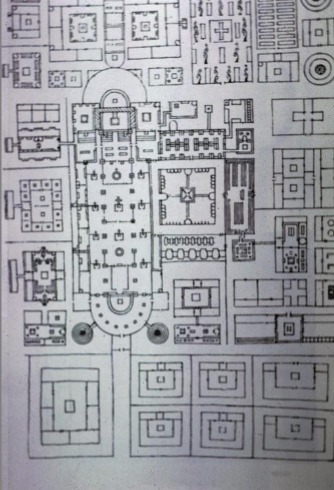
Hermit
A person that goes off to live on their own in order to devote themselves to religion.
Monk
A person that goes to live in a monastery community in order to devote themselves to religion.
Benedictine Rule
The rules for the Monastery that are poverty, chastity, and obedience.
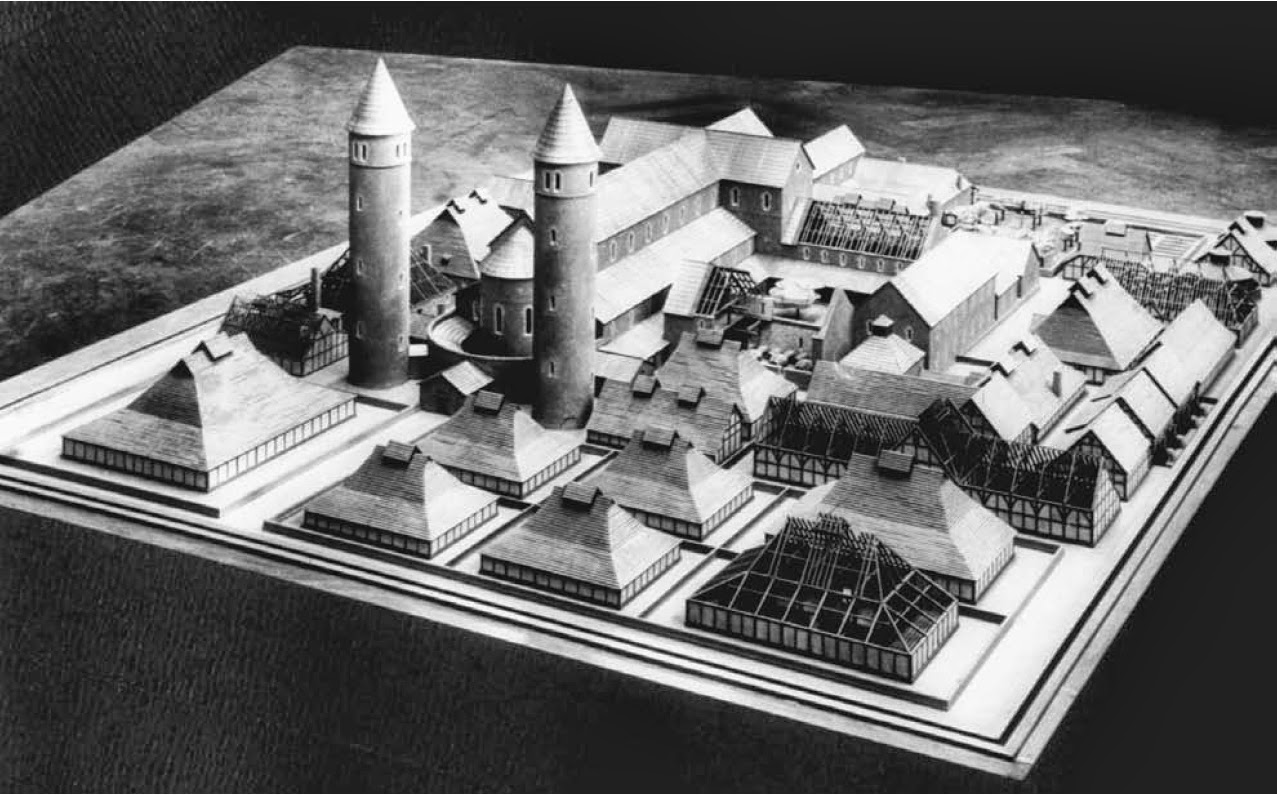
S. Gall Plan
9th century CE. Base typology for monasteries. Had hostels, a main church, choir, cloister, dormitory, refectory, chapter house, as well as farms, gardens, and barns.
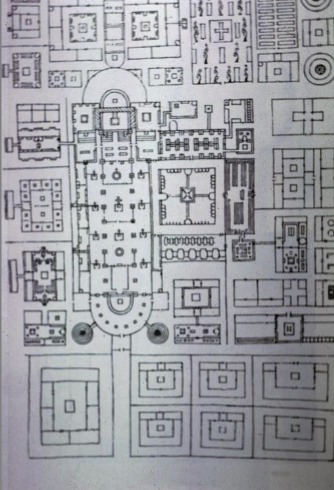
choir in a monastery
Separate space for monks in a church that keeps them separate from the people.
Cloister
A monastery courtyard, usually planted, enclosed by a covered ambulatory.
Refectory
The eating hall in a religious or secular institution.
Chapter house
A place of assembly for the business meetings of a monastery.

Abbey at Cluny
Saone-et-Loire, France, begun 10th century, continued to 1130. Later version of a monastery but called an Abbey b/c of an Abbot governing it and includes an infirmary and chapels. Became so powerful that a town formed around it making it not secluded. Church is rebuilt 3 times.


Cistercian Abbey at Fontenay
France, 1130-47 CE. A group of monks from the Cluny broke off because they were disgusted with the Cluny. Smaller than the Cluny and only allowed a limited amount of people and well as very remote. All materials are similar, and the building is not very elaborate.


Lindau Gospel
A manuscript produced by the Abbey of Lindau (Germany). Monks that wrote manuscripts would fast, pray, and confess. 9th century CE.